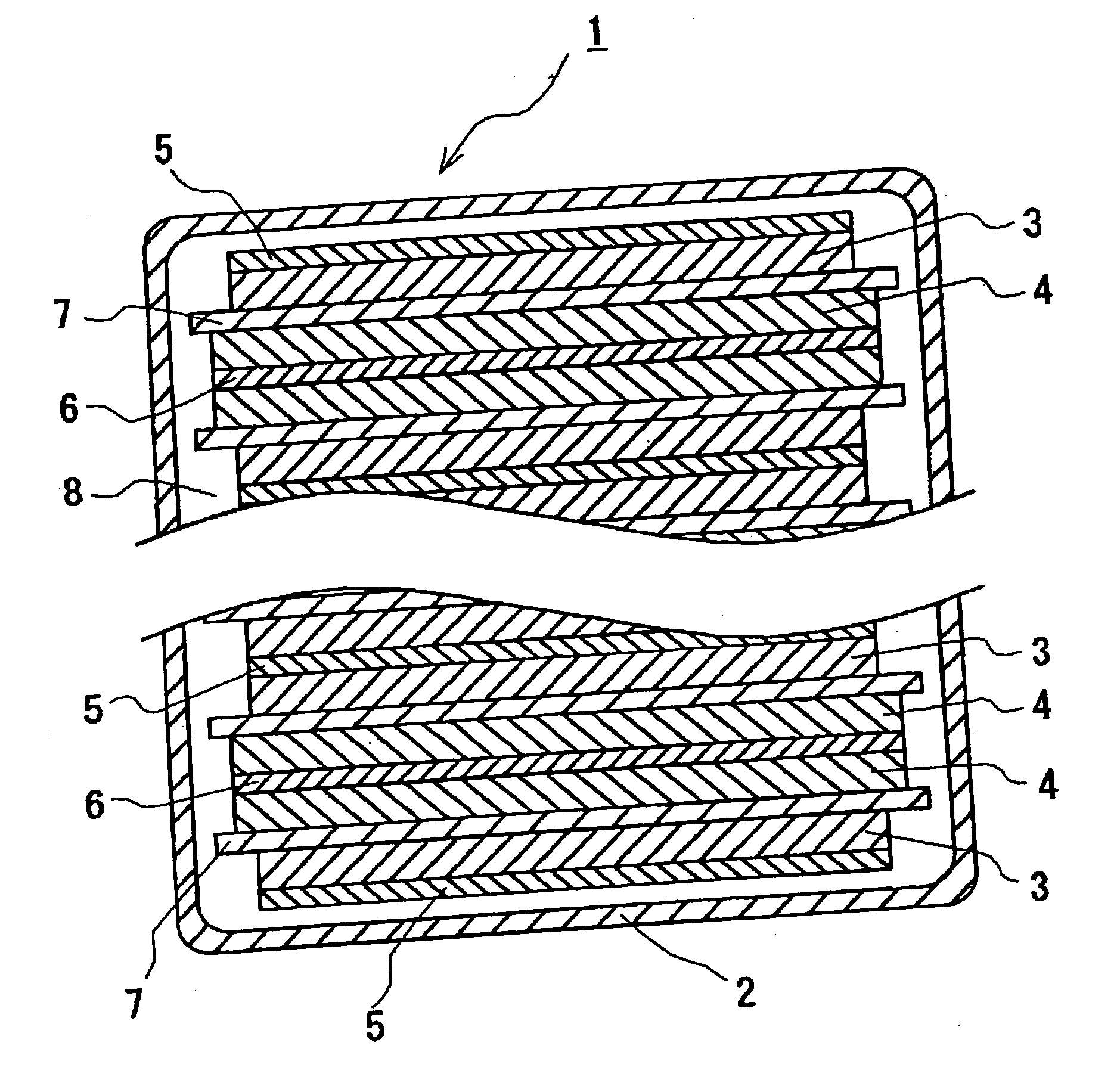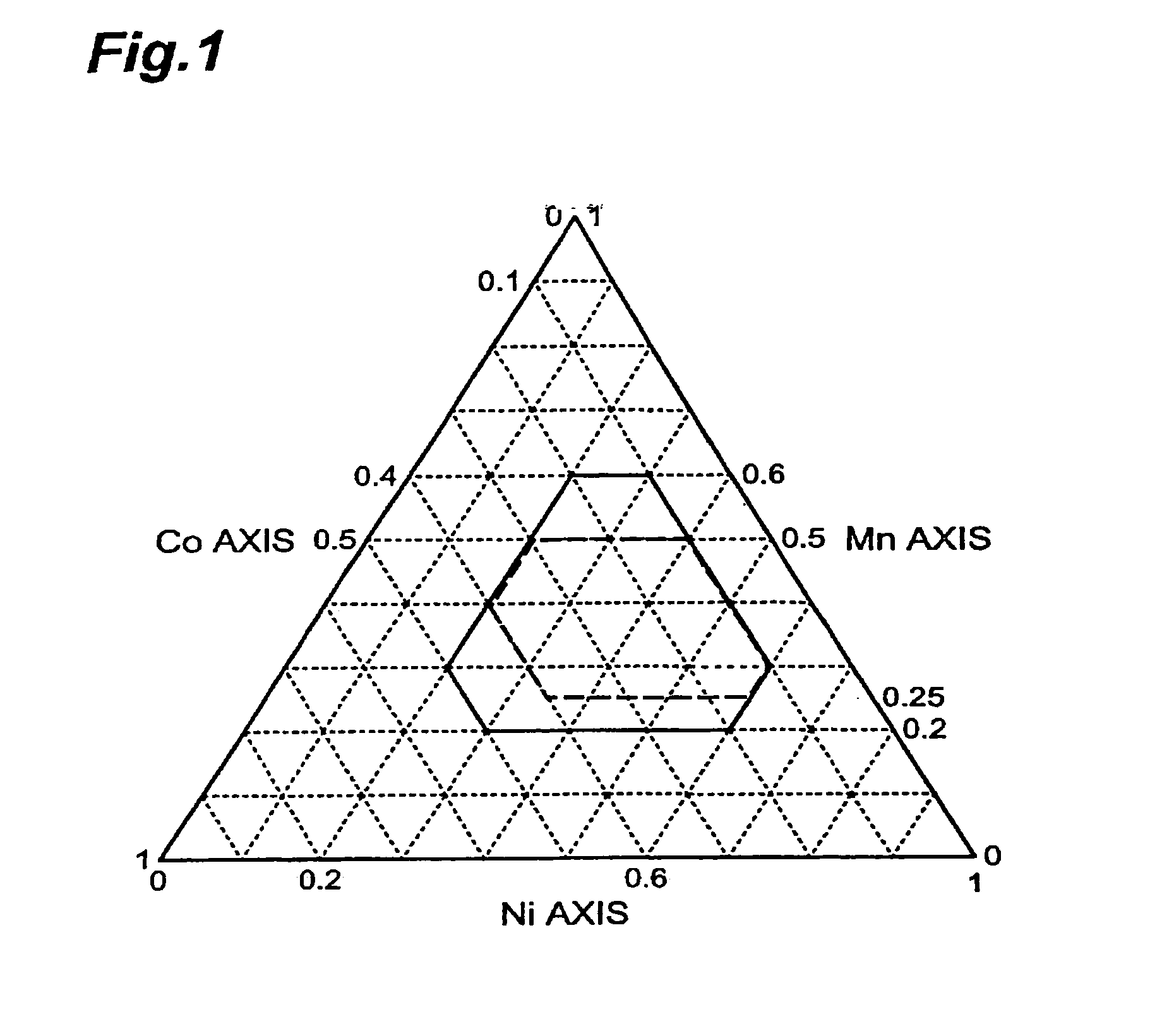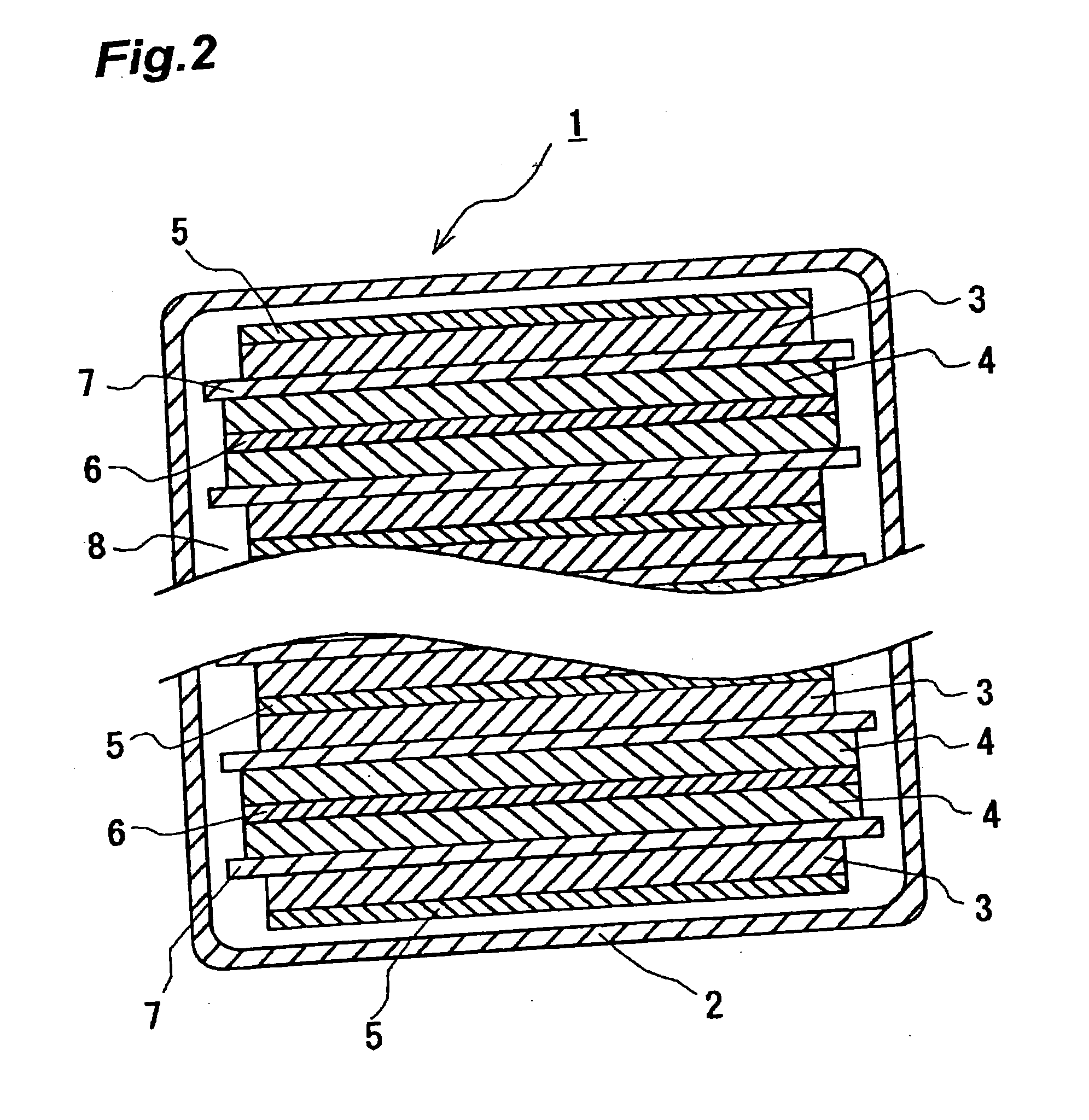Electrode active material, electrode, lithium-ion secondary battery, method of making electrode active material, and method of making lithium-ion secondary battery
a technology of active materials and active materials, applied in the field electrodes, lithium-ion secondary batteries, methods of making electrode active materials, and methods of making lithium-ion secondary batteries, can solve the problems of not always finding satisfactory recovery characteristics of electrode active materials, and achieve the effect of effective production
- Summary
- Abstract
- Description
- Claims
- Application Information
AI Technical Summary
Benefits of technology
Problems solved by technology
Method used
Image
Examples
example 1
Preparation of Positive Electrode
[0179]A complex oxide represented by:
LixMnyNizCo1−y−zOw
where x=1, y=0.30, z=0.55, and w=2 was used (90 parts by weight) as a positive electrode active material, whereas carbon black (6 parts by weight) as a conductance enhancer, and polyvinylidene fluoride, i.e., PVDF (4 parts by weight) as a binder were mixed therewith, and N-methyl-2-pyrrrolidone was dispersed therein as a solvent, so as to yield slurry. Subsequently, this slurry was applied onto an aluminum foil acting as a collector, dried, and subjected to rolling, so as to yield a positive electrode.
[0180]The crystal structure of this complex metal oxide was analyzed by X-ray diffraction, and was verified as a halite type. The BET specific surface area of the complex metal oxide was measured and found to be 0.55 m2 μg, whereas its average particle size was 12 μm.
[0181]Preparation of Negative Electrode
[0182]Synthetic graphite (92 parts by weight) as a negative electrode active material was mixe...
example 2
[0187]A lithium-ion secondary battery was obtained as in Example 1 except that a complex oxide represented by:
LixMnyNizCo1−y−zOw
where x=1, y=0.41, z=0.42, and w=2 was used as the positive electrode active material.
[0188]The crystal structure of this complex metal oxide was analyzed by X-ray diffraction, and was verified as a halite type. The BET specific surface area was 0.60 m2 / g, whereas its average particle size was 7.6 μm.
example 3
[0189]A lithium-ion secondary battery was obtained as in Example 1 except that a complex oxide represented by:
LixMnyNizCo1−y−zOw
where x=1, y=0.33, z=0.33, and w=2 was used as the positive electrode active material.
[0190]The crystal structure of this complex metal oxide was analyzed by X-ray diffraction, and was verified as a halite type. Thus obtained X-ray diffraction spectrum is shown as curve Li in FIG. 5. The BET specific surface area was 0.79 m2 / g, whereas its average particle size was 9.5 μm.
PUM
| Property | Measurement | Unit |
|---|---|---|
| Temperature | aaaaa | aaaaa |
| Temperature | aaaaa | aaaaa |
| Temperature | aaaaa | aaaaa |
Abstract
Description
Claims
Application Information
 Login to View More
Login to View More - R&D
- Intellectual Property
- Life Sciences
- Materials
- Tech Scout
- Unparalleled Data Quality
- Higher Quality Content
- 60% Fewer Hallucinations
Browse by: Latest US Patents, China's latest patents, Technical Efficacy Thesaurus, Application Domain, Technology Topic, Popular Technical Reports.
© 2025 PatSnap. All rights reserved.Legal|Privacy policy|Modern Slavery Act Transparency Statement|Sitemap|About US| Contact US: help@patsnap.com



